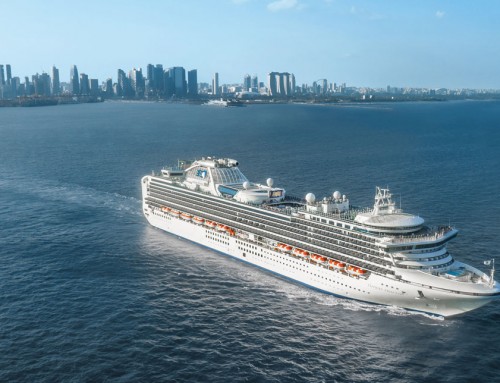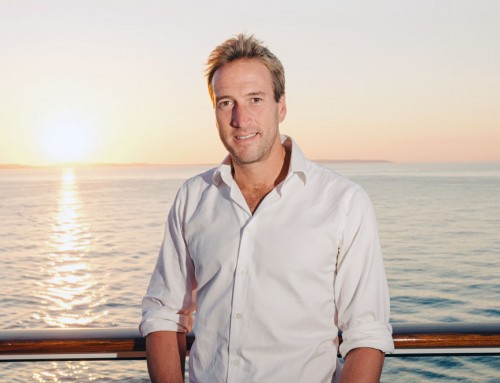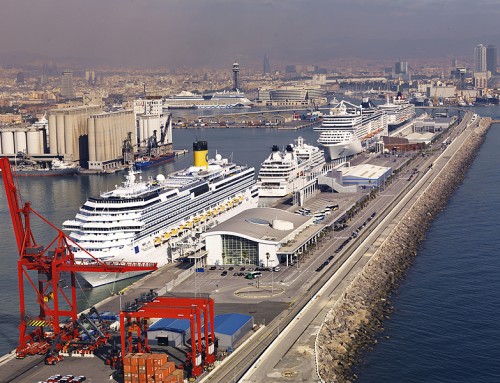 Going underground is becoming a recurring theme of my Croatian voyage aboard Aegean Odyssey.
Going underground is becoming a recurring theme of my Croatian voyage aboard Aegean Odyssey.
On the day’s organised walking tour of Split, passengers were shown around Diocletian’s Palace, a remarkable walled city built as a retirement home by the Roman emperor, and since occupied by a series of squatters who all left their mark without doing enough damage to the original to prevent it deservedly becoming a UNESCO World Heritage site.
Above ground it is spectacular enough, with a mausoleum built to contain the emperor’s body and then later – and ironically in view of the number of Christians Diocletian put to death – converted into one of the smallest cathedrals in the world.
Below ground, as I discovered when I returned from the ship after lunch, is evidence of the remarkable engineering and construction skills available to Roman builders in the 3rd Century. Built on a sloping site leading down to the sea, huge barrel-vaulted chambers support the streets, squares and palaces (above).
Most remarkable of all, once the Romans had abandoned the place, those who took over simply used these cellars as a convenient rubbish dump, and it is only in the past 50 or 60 years that they have been excavated and their secrets revealed (above).
It felt like a world apart – and I had the whole place to myself, only yards away from the bustling cafes and bars of the Reva promenade,.
Back in the sunlight, I was bombarded with singing from all sides. Wedding parties were everywhere – on open-sided coaches driving through the streets, and posing for pictures on the steps of the Diocletian’s Peristyle Hall.
And from the evidence of my ears today, I’d back the supporters of Hajduk Split against Liverpool, Arsenal or Chelski terrace choir any day. Drunk or sober, they might even give Simon Cowell a run for his money on the X-Factor.
 :: THE WEATHER was less kind for our arrival in Korcula this morning, and rain during the early-morning tour (off the ship before 8.00 a.m.) had us scurrying for shelter .
:: THE WEATHER was less kind for our arrival in Korcula this morning, and rain during the early-morning tour (off the ship before 8.00 a.m.) had us scurrying for shelter .
We found it first in the Bishop’s Palace, which contained an eclectic mixture of exhibits including an elaborate gold necklace presented to Mother Teresa when she won the Nobel Peace Prize, two Leonardo da Vinci sketches of Roman gladiators, and an ivory statuette of Mary Queen of Scots.
Korcula’s Piazza San Marco and St Mark’s Cathedral are rather less grand than their Venetian counterparts, but there is nevertheless a dazzling Tintoretto over the altar here, for this has been a wealthy island for centuries, earning fortunes from quarrying, stone masonry and shipbuilding long before it turned to raking in money from tourists.
And the town can thank Marco Polo for adding to its visitor numbers. A derelict house round the corner from the cathedral lays claim to being his childhood home, and he was certainly here in 1298 when the Genoese and Venetian fleets clashed in one of the biggest sea battles of the Middle Ages.
Unfortunately for him, the Genoese won and he was taken prisoner, although it was actually a slice of luck because he ended up sharing a cell with the man who became his ghost writer, producing one of the world’s most enduring travel books. If he had had any foresight, he might have written about his Voyages to Antiquity rather than simply his Travels. But that’s another story.
Having bought his house, the town council plans to spend millions of euros developing a museum; at the moment a lemon tree (above) grows out of its wall and there’s a chain of sweet-scented souvenir shops which bear his name and sell essentials such as Marco Polo mugs and ashtrays.
Although the rain abated and allowed Aegean Odyssey’s passengers to explore the rest of the small town, the wind continued to rise and Capt Roland Andersson announced that it would not be possible to tender ashore into Hvar as planned.
Instead, we are heading straight for Dubrovnik, and will spend an extra night there. I shall be flying home tomorrow, so more about the ship itself later.






Leave A Comment